Ancient Hilltop Villages of Greece You Can Still Visit

Ancient Hilltop Villages of Greece You Can Still Visit
While Greece's iconic archaeological sites like the Acropolis and Delphi capture most travelers' attention, the country's historic villages offer equally compelling windows into Greek heritage. Perched on mountainsides, nestled in valleys, or dramatically overlooking the sea, these settlements have survived through centuries of history, preserving traditional architecture and ways of life. From medieval fortresses to traditional stone villages, these living historic communities provide authentic glimpses into Greece's multilayered past, from ancient times through Byzantine, Venetian, and Ottoman influences.
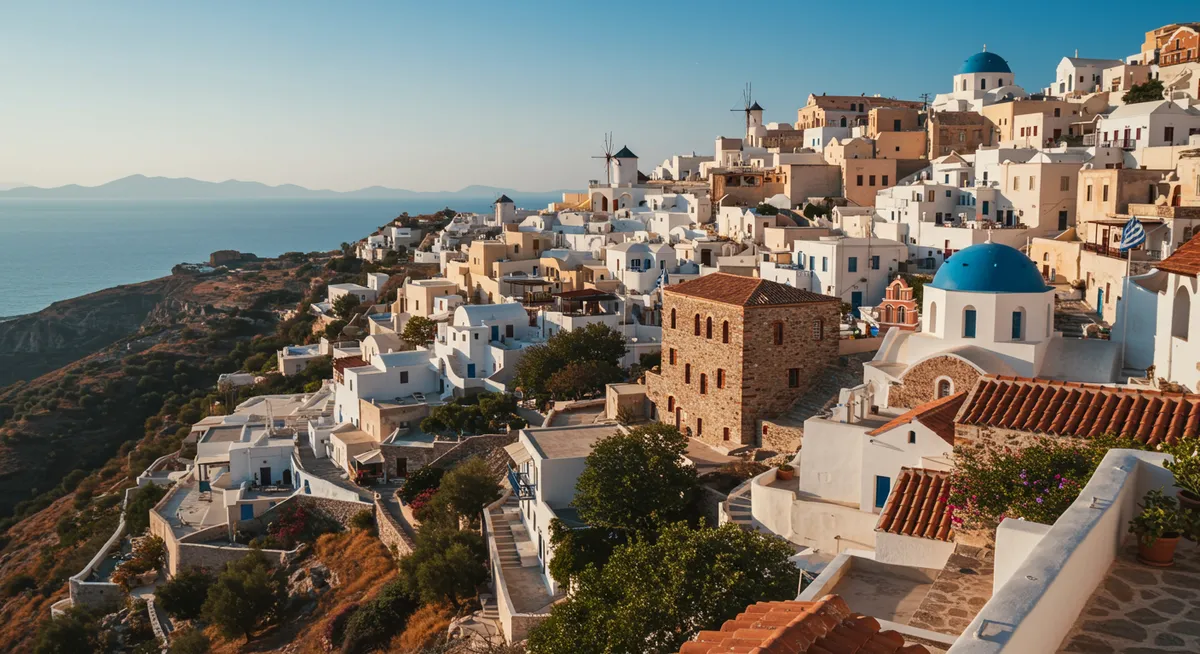
1. Monemvasia: Greece's Medieval Gibraltar
Rising dramatically from the sea off the east coast of the Peloponnese, the massive Gibraltar-like rock of Monemvasia hosts one of Greece's most extraordinary medieval settlements. Connected to the mainland by only a narrow causeway (its name means "single entrance"), this formidable natural fortress contains a remarkably well-preserved Byzantine town hidden from mainland view. With its maze of narrow lanes, Byzantine churches, and stone mansions enclosed within impressive fortifications, Monemvasia offers visitors an unparalleled journey through medieval Greek history.
What Makes It Special
- Natural Fortress: Occupies a massive rock island connected to the mainland by a single, easily defensible causeway
- Medieval Preservation: Exceptionally intact Byzantine, Venetian, and Ottoman architecture with minimal modern alterations
- Dramatic Setting: Stone buildings seem to grow organically from the rock, with stunning sea views
- Byzantine Churches: Home to several important medieval churches, including the remarkable Agia Sophia perched at the summit
Historic Significance
Founded in the 6th century by Byzantine Greeks seeking shelter from Slavic and Arab raids, Monemvasia developed into a major maritime and commercial center by the 10th century. Its naturally defensible position made it one of the most important fortresses in the Byzantine Empire. The town changed hands multiple times between Byzantine, Frankish, Venetian, and Ottoman rulers, with each leaving their architectural mark. Despite this tumultuous history, Monemvasia maintained its Greek character and strategic importance until the modern era.
What to Experience
Enter through the fortress gate and lose yourself in the narrow cobblestone streets lined with beautifully restored stone mansions, many converted to boutique hotels and restaurants. Visit the Church of Christ Elkomenos in the main square, housing important Byzantine icons. Climb to the upper town to explore ruins of the aristocratic quarter and the perfectly preserved 12th-century church of Agia Sophia perched on the cliff edge. Stay overnight to experience the magical atmosphere after day-trippers depart, when lanterns illuminate the medieval pathways.
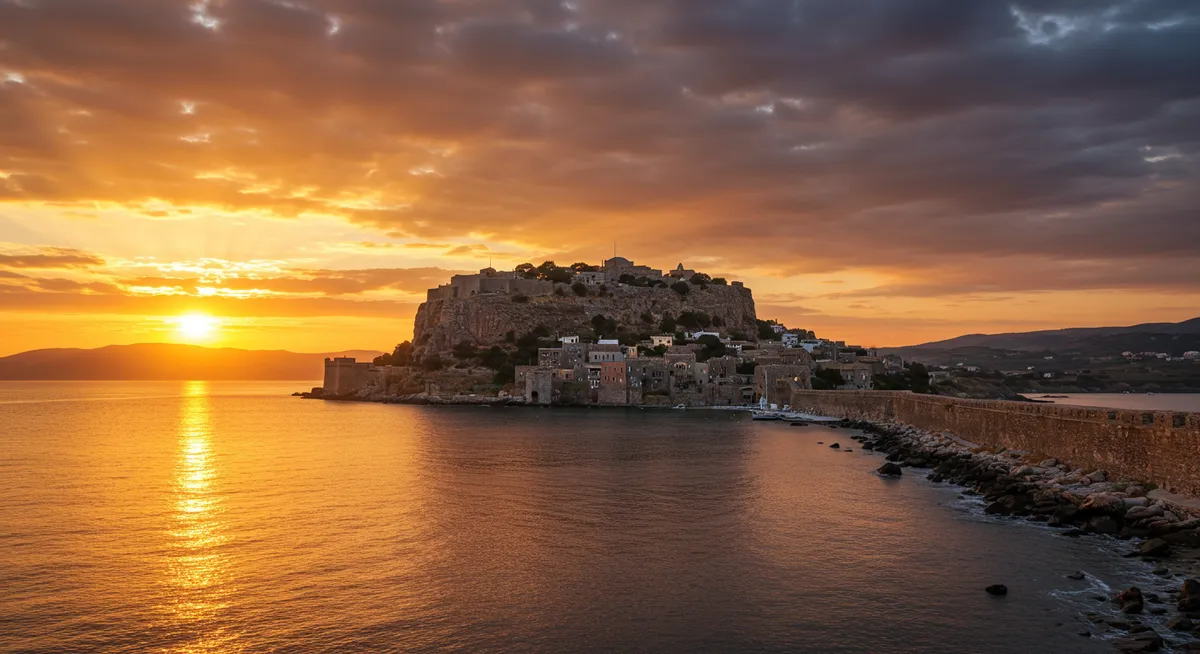
2. Dimitsana: Stone Masterpiece of Arcadia
Clinging to the mountainside high above the Lousios Gorge in the heart of the Peloponnese, Dimitsana stands as one of Greece's finest examples of traditional stone architecture. Once an important intellectual center known for its famous Greek school and library, this historic village in the Arcadia region combines perfectly preserved stone buildings with a spectacular natural setting. Beyond its architectural heritage, Dimitsana offers a fascinating glimpse into Greece's pre-industrial technological history through its restored water-powered workshops.
What Makes It Special
- Stone Architecture: Magnificent examples of traditional Peloponnesian stone construction adapted to the steep mountainside
- Water Power Heritage: Home to the fascinating Open-Air Water Power Museum showcasing pre-industrial water-powered mills
- Intellectual History: Site of an important secret school during Ottoman occupation that helped preserve Greek language and identity
- Natural Setting: Dramatic views over the deep Lousios Gorge with its historic monasteries built into cliff faces
Historic Significance
Dimitsana rose to prominence during the later Byzantine and Ottoman periods as a center of learning and craftsmanship. The town's Greek school, operating secretly during Ottoman rule, produced several important intellectual figures who contributed to the Greek independence movement. The village's location near abundant water sources led to the development of various water-powered industries, including flour mills, tanneries, and—crucially—gunpowder mills that supplied Greek revolutionaries during the 1821 War of Independence.
What to Experience
Explore the narrow cobblestone streets lined with perfectly preserved stone mansions, capturing the essence of traditional Peloponnesian architecture. Visit the remarkable Open-Air Water Power Museum in the gorge below town, where restored mills demonstrate traditional industrial processes. Tour the library housing rare manuscripts and the former secret school that operated during Ottoman times. Hike the ancient paths to the astonishing monasteries built into the cliffs of the Lousios Gorge, including the hanging monastery of Prodromos.
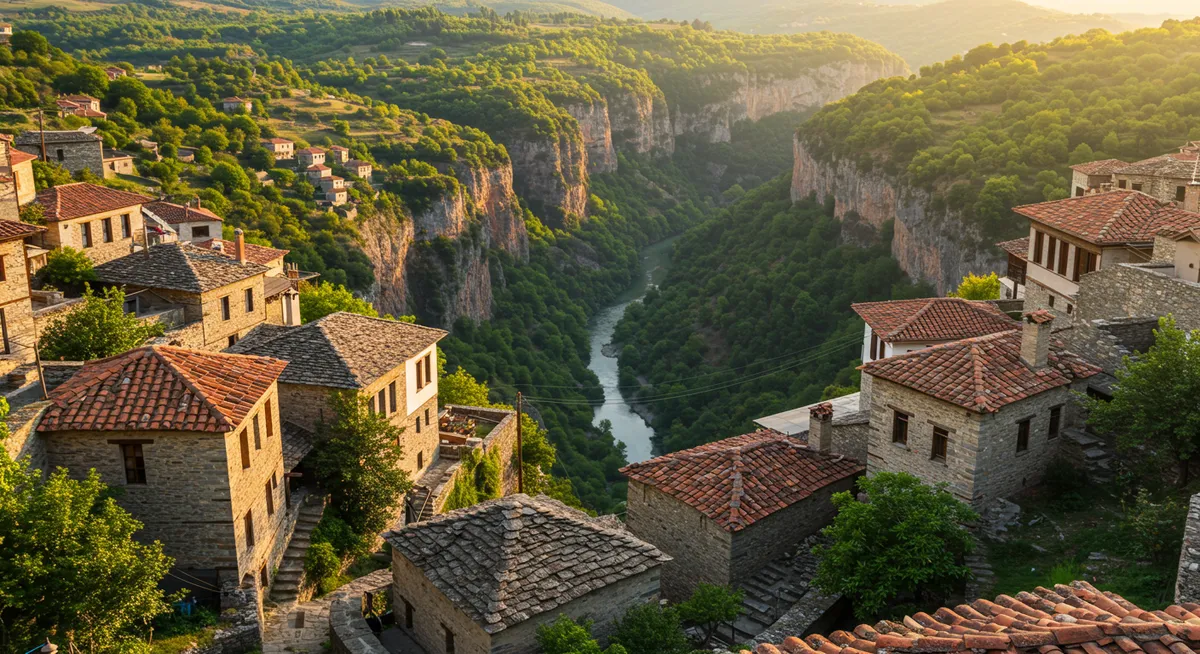
3. Nafplio: First Capital with Layers of History
While larger than a typical village, Nafplio's extraordinarily well-preserved old town merits inclusion for its unmatched concentration of historical architecture spanning multiple eras. Nestled below three imposing fortresses on the shores of the Argolic Gulf, this first capital of independent Greece showcases a stunning blend of Venetian, Ottoman, and neoclassical influences. Elegant mansions, Byzantine churches, Ottoman fountains, and grand Venetian fortifications combine to create what many consider Greece's most beautiful historic town.
What Makes It Special
- Architectural Diversity: Exceptional examples of Venetian, Ottoman, and Greek neoclassical styles in a cohesive urban ensemble
- Towering Fortresses: Dominated by three impressive castles, including the massive Palamidi fortress with its 999 steps
- First Capital: Served as the first capital of independent Greece (1821-1834), with buildings from this pivotal period
- Maritime Heritage: Beautiful port setting with Bourtzi castle on a small island in the harbor
Historic Significance
Inhabited since antiquity, Nafplio gained prominence during the Middle Ages when Venetians recognized its strategic location and built extensive fortifications. The town changed hands several times between Venetian and Ottoman rulers, with each leaving distinct architectural imprints. Following Greek independence in 1821, Nafplio was selected as the first capital of the modern Greek state, hosting the government until 1834. This period saw the addition of neoclassical buildings influenced by European architectural trends, completing the town's unique historical layering.
What to Experience
Wander the car-free streets of the old town, with its marble pavements, Venetian mansions, and Ottoman fountains. Climb the 999 steps (or take the road) to the massive Palamidi fortress for spectacular views and to explore its eight independent bastions. Visit the Bourtzi castle on its small island in the harbor, originally built by the Venetians to protect the port. Explore important buildings from the capital period, including the first Greek parliament building and the church where the first governor of Greece was assassinated.
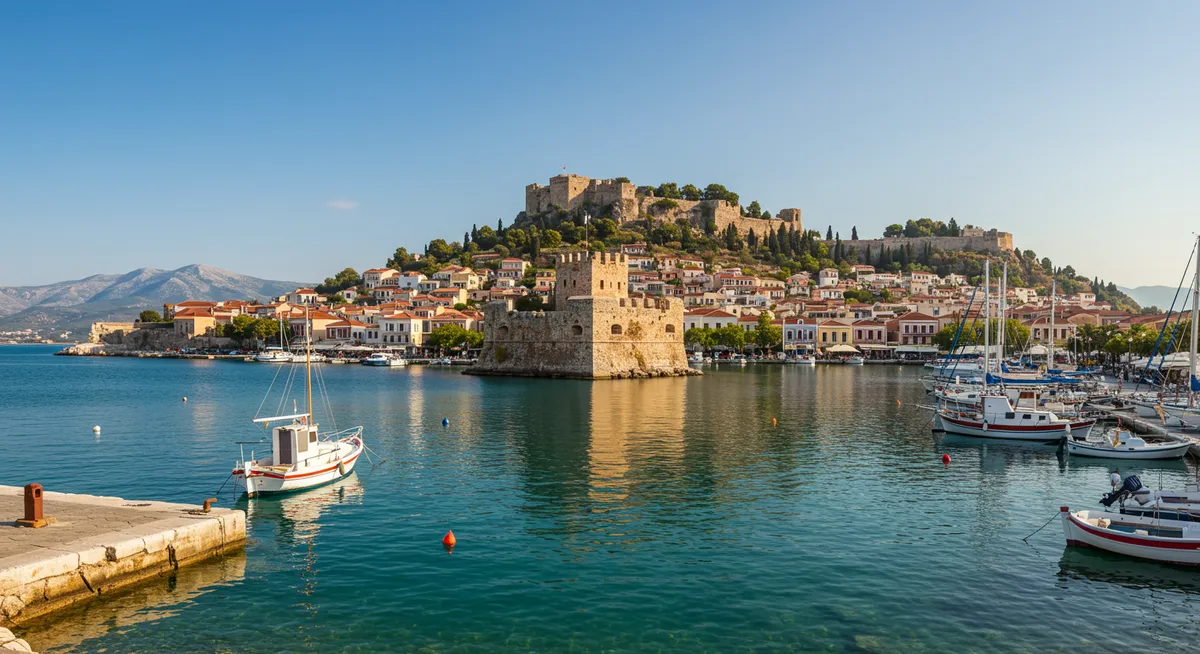
4. Metsovo: Living Museum of Epirus
Nestled high in the Pindus Mountains of northwestern Greece, Metsovo stands as the most important historic Vlach village in the country. This prosperous settlement, famous for its distinctive architecture, woodcarving tradition, and dairy products, offers visitors a glimpse into the unique culture of the Vlachs—a Romance-language ethnic group with a rich pastoral heritage. Stone mansions with slate roofs, wooden balconies, and a spectacular alpine setting make Metsovo one of Greece's most distinctive and atmospheric historic villages.
What Makes It Special
- Unique Vlach Heritage: Center of Greece's Vlach minority culture with distinct traditions and crafts
- Alpine Architecture: Stone and wood buildings with projecting upper floors adapted to the mountain environment
- Woodcarving Tradition: Famous for exceptional woodcarving seen in church iconostases, furniture, and decorative elements
- Culinary Heritage: Renowned for its distinctive smoked cheese (metsovone) and wine-making traditions
Historic Significance
Metsovo emerged as an important mountain settlement during Byzantine times, but reached its peak during the Ottoman period when it received special privileges due to its strategic position controlling mountain passes between Epirus and Thessaly. The village's merchants established trade networks reaching Constantinople, Venice, and the Danubian Principalities, bringing considerable wealth back to their hometown. This prosperity funded the construction of impressive mansions, churches, and schools, many of which survive today. Unlike many Greek settlements, Metsovo maintained relative autonomy throughout Ottoman rule.
Greek Historic Villages: Charting Your Mediterranean Journey
Greece's historic villages offer diverse experiences reflecting the country's complex history. Consider these themed routes to explore these remarkable places:
- Byzantine Heritage Tour: Begin at Monemvasia and explore other medieval settlements that preserve Greece's Byzantine past
- Peloponnese Stone Villages: Visit Dimitsana and other nearby stone villages in the mountains of the Peloponnese
- Architectural Evolution Journey: Explore Nafplio to understand the layering of Venetian, Ottoman, and Neoclassical influences in Greek towns
- Mountain Cultures Route: Experience Metsovo and other highland villages to discover the diverse ethnic traditions of Greece's mountainous regions
Travel Tip: While summer is peak tourist season in Greece, consider visiting these historic villages in May or October when the weather is pleasant, crowds are thinner, and local life is more evident. Spring brings wildflowers to the mountains, while autumn offers harvest celebrations and beautiful foliage.
Related Content
If you're interested in Greece's historic villages, you might also enjoy these related articles:
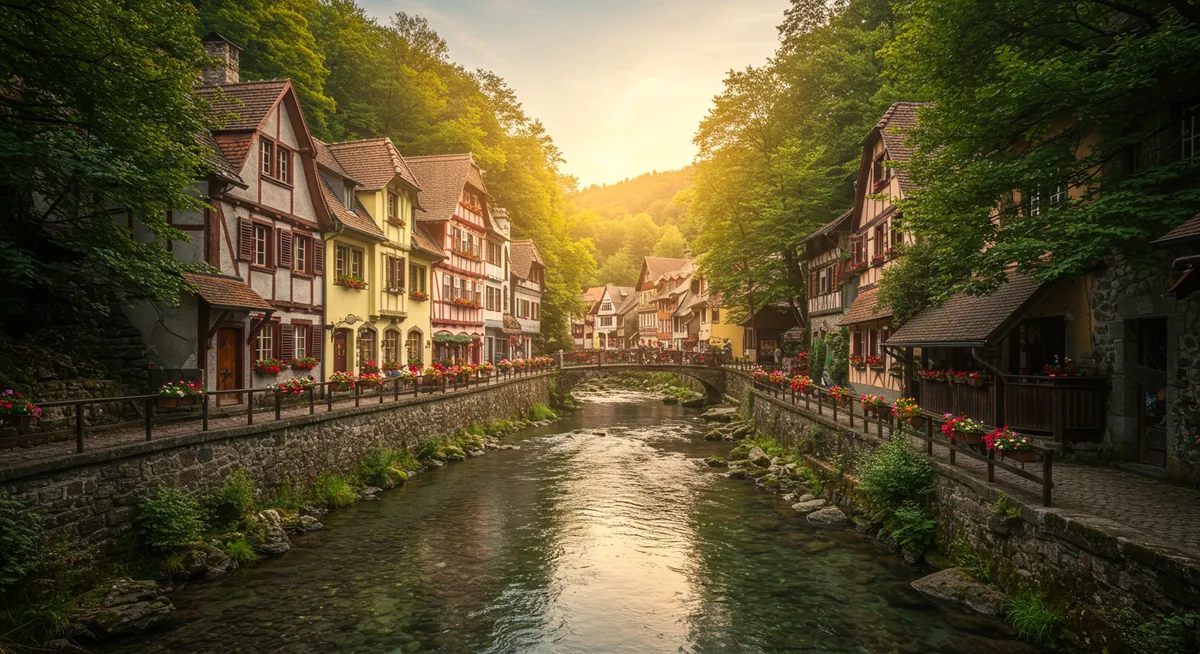
Hidden Gem Towns Around the World
Explore charming, off-the-beaten-path towns and villages across the globe that offer authentic travel experiences away from tourist crowds.

Historic Mountain Villages in the Italian Alps
Discover Italy's most enchanting Alpine villages, from the medieval stone houses of Chianale to the Swiss-influenced architecture of Soglio.
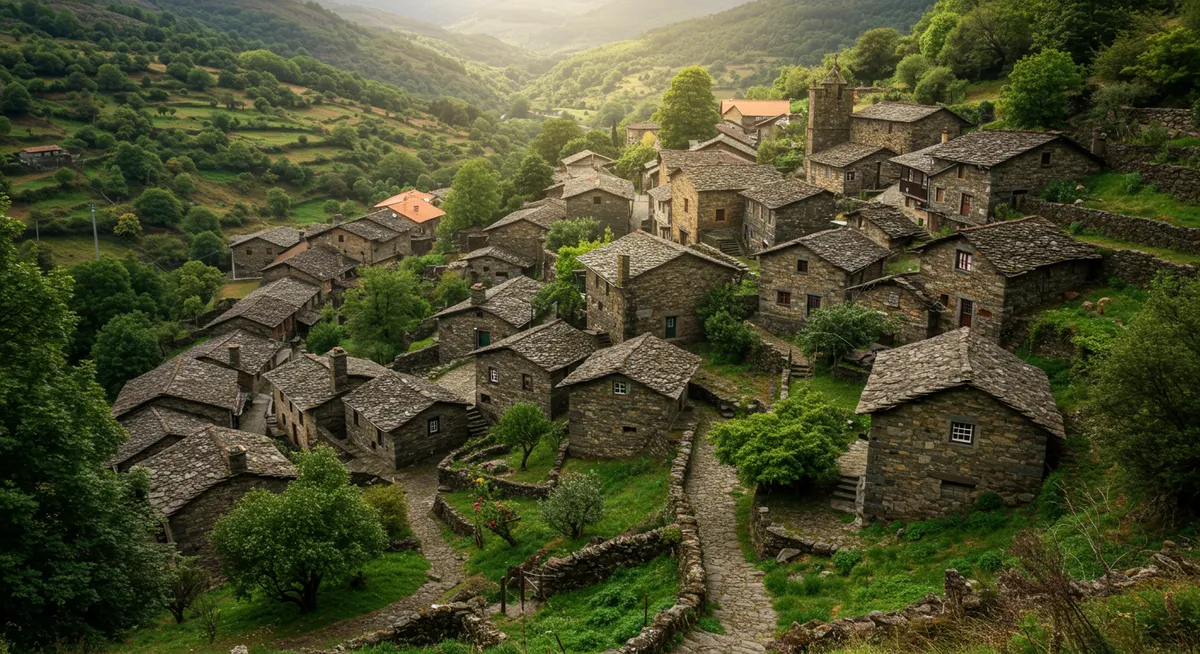
Portugal's Schist Villages: Timeless Beauty in Stone
Explore Portugal's remarkable schist villages, from the perfectly preserved Piódão to the artistically revitalized Talasnal.
Explore More Historic & Hidden Gem Villages
Discover more extraordinary villages across the Mediterranean and beyond.